There’s no doubt that Thailand is one of the most desired destinations for adventure travelers right now.
With advantageous exchange rates, an uncomplicated tourist visa policy, tranquil beaches, and world-renowned food and culture, the number of visitors to the country has doubled over the past few years.
Although the climate varies throughout Thailand, you can visit all year round.
The best time to travel is during the cool and dry season between November and early April.
In the south, the climate differs between the eastern and western coasts.
The west coast is more favorable during the winter months, when diving and snorkeling will be at its best. The weather on the east coast is good for most of the year, with the lowest rainfall in January and February and the highest in November.
Travelers can spend their trip to Thailand lounging on a beach on Koh Lanta, drinking cocktails on a rooftop bar in Bangkok, and even mingling with some elephants in Chiang Mai.
Before you book your tickets, use this guide to determine the best time to visit Thailand for your fantasy Thai vacation.
Contents
Timeline for visiting Thailand
- Fly into Bangkok – 4 Days
- Chiang Mai- 2 Days
- Chiang Rai- 2 Days
- Koh Lanta- 2 days
- Exploring beaches- 2-4 days
Bangkok – 4 Days
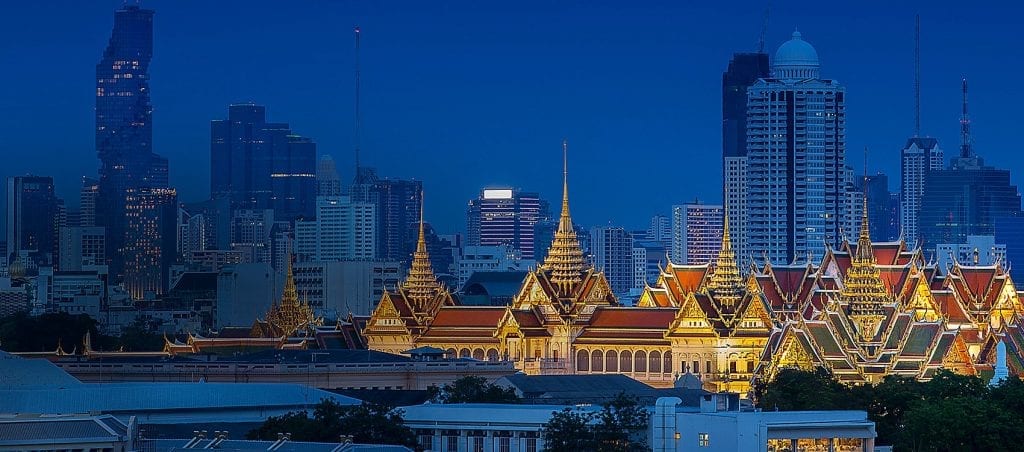
Bangkok is one city that seems to be on everyone’s to-do list. It’s vibrant, chaotic, and a shock to the senses.
It’s a hectic introduction to Thailand though, so prepare yourself. Remember, if you’re coming from somewhere with a bit cooler climate, give yourself time to adjust to the humidity and heat.
So, what do you see in Bangkok?
Well, that’s a long list!
At the top of the list should be the Grand Palace and Wat Phra Kaeo.
This is the number one sight in Bangkok, and for a worthy reason. A walled compound contains both these sights, with the 19th century Grand Palace a fascinating mix of Western and Thai styles.
Wat Phra Kaeo, which houses the Emerald Buddha, is generally regarded as the most important Buddhist temple in the country.
Chiang Mai – 2 Days
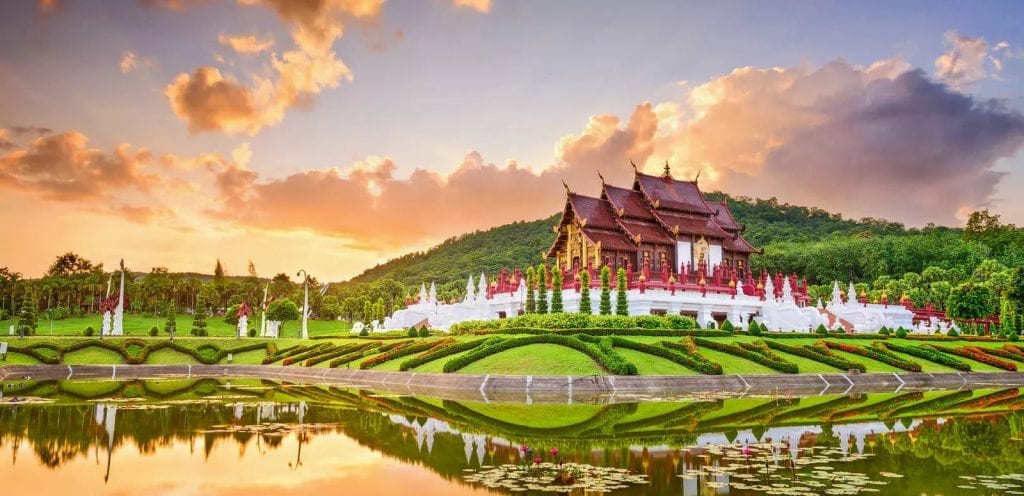
Onward, north to Chiang Mai by train or bus and enter a vibrant city in a lush green region in northern Thailand.
For less of a beach experience and more mountains, forests and temples, Thailand’s hill country truly is a traveler’s must-see, and no wonder why so many expats land here.
Cheap massages, amazing food, laid-back life, and bustling night markets is what makes Chiang Mai special.
There are many options for day trips from Chiang Mai as well: Buddhist temples, elephant sanctuaries, jungle treks, visit hill tribes and if you like national parks, Doi Inthanon isn’t far away.
Many foreigners have a home base long term here thanks to the pleasant climate, sizeable expat community, fast internet and low cost of living.
2 nights in Chiang Rai

If you want to see the most amazing temples in Thailand then you cannot skip Chiang Rai.
The White Temple is probably the most captivating temple you will ever see and is located near to Chiang Rai.
Additionally you should explore the Golden Triangle with its amazing landscapes, viewpoints, waterfalls and indigenous tribes.
Chiang Rai is particularly noteworthy for two temples: the White Temple of Chiang Rai, and the Black Temple of Chiang Rai.
These are two different but entirely epic temples, both of which are very much worth the journey north alone.
2 nights Koh Lanta
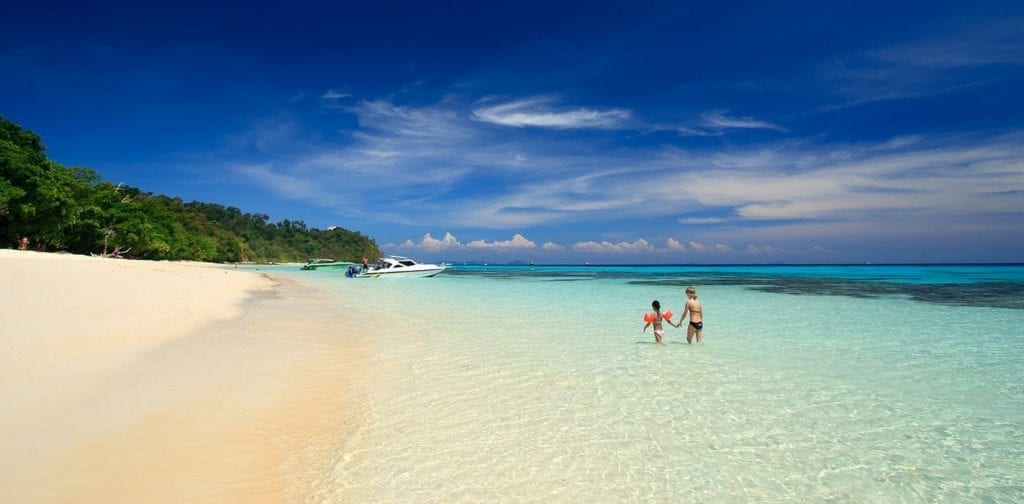
This is the perfect island to unwind and get in your peaceful beach days.
Strolling around on the beach is the best thing to do on this island apart from having some drinks and watching the stars.
2 – 4 days exploring beaches
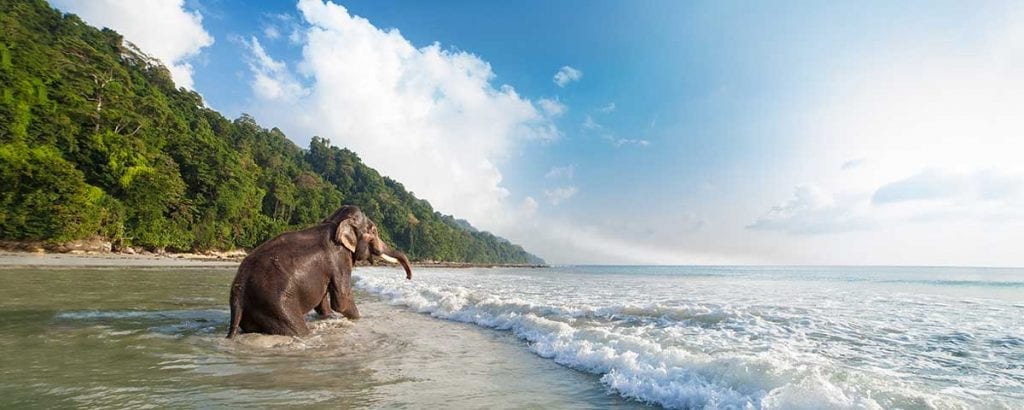
Where you go next on your journey is really up to the style of beach you’re looking for.
If you’re into big resorts, lots of people, and partying the island of Phuket is the right spot for you.
For a more discreet experience, head to Thai Mueang, about an hour north of Phuket, where the beaches are generally silent and the lodging houses quiet.
When is the rainy season in Thailand?
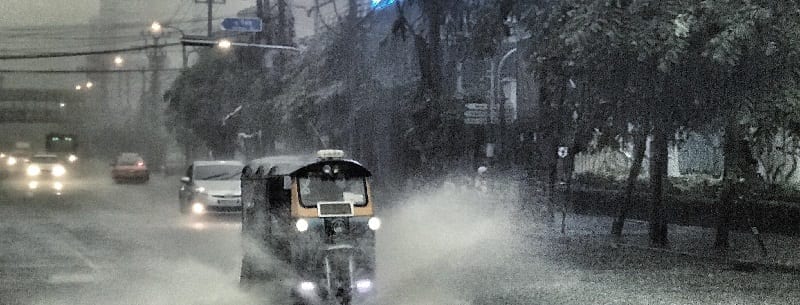
We have all heard dreadful stories about traveling in Southeast Asia during the rainy season.
However, even though the rainy season can be challenging to plan for, there are still plenty of tips and tricks that can help you have a remarkable experience.
The rainy season in Thailand varies from region to region and is largely dominated by the Monsoon.
Generally speaking, Thailand’s rainy season can be classified as May/June to October. For most of Thailand, the wettest months are usually August-October.
Travel Timing Tip: May through to October is the cheapest time to visit central Thailand because of the rainy season.
Bangkok is the place to be for Chinese New Year, which falls in either January or February depending on the year.
Travelling during the rainy season and within the months of July to October is usually a much more affordable option.
But, do take into consideration that flooding can occur, and boat services can be limited during stormy weather, so being flexible is key.
Can you visit Thailand in the Winter
Traveling to Thailand in winter is actually ideal as the monsoon rain has moved on and drier, more pleasing weather returns.
But better weather certainly draws more tourists.
The busy season ramps up for Thailand in winter and continues until the heat becomes nearly intolerable in late spring.
Winter is High Season in Thailand
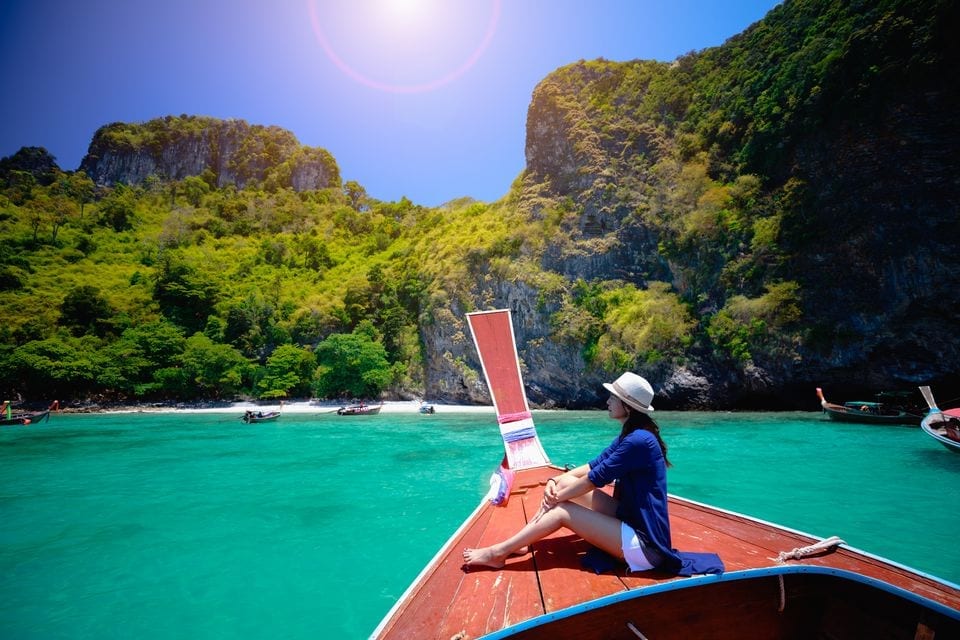
As with most countries that experience a monsoon season, more pleasant weather lures more and more travelers to enjoy sunny days.
Thailand is becoming a tourist destination year-round so trends are becoming more blurred each year. In general, the high season begins to build up starting in November.
Popular destinations get busier as winter in Thailand ensues.
Christmas is a very busy time in Thailand, but even more travelers turn up afterwards in January and February after holiday celebrations at home are completed.
Winter Weather
December, January, and February are typically the months with the best weather in Thailand.
From November to February, daily humidity drops to 50 to 60 percent, and temperatures stay at a relatively comfortable 86 – 96 degrees F (30 – 35 degrees C), so the winter months are Thailand’s most pleasant season.
What is the best time to visit Thailand?
The best time to visit Thailand depends a lot on where you’re going.
The islands on one side of the country have a slightly different rainy season than those on the other; the good news is that this can extend Thailand’s dry, sunny season.
So if it’s rainy and grey in one place, it’s only a short journey over the coast to sunshine on the other side.
The best months to go, in general are December to March – though as with any tropical destination, short and absurdly torrential spurts of rain are entirely possible, even on the sunniest of days.
How about this “shoulder season”
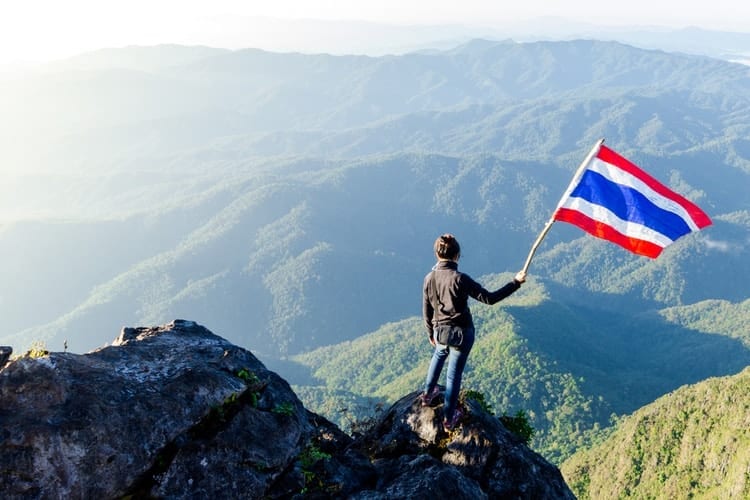
Thailand’s shoulder season lasts from April to June, and then again from September to October.
Temperatures will peak around April, but this also means you don’t have to contend for a prime spot on the beaches, and lodging rates will be much lower.
However, business and ferry services on the smaller islands (especially on the Andaman Sea side) will shut down as the low season approaches.
The period from September to October sees more rain, but fewer tourists.
Best time for the islands: East Coast
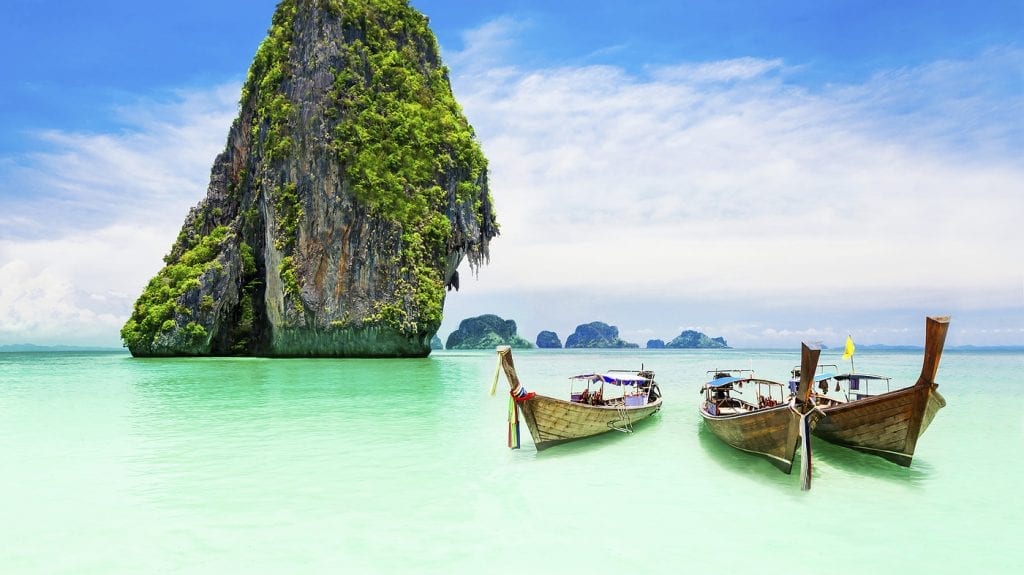
The Thai islands in the Gulf of Thailand – Koh Samui, Koh Phangan, Koh Tao – tend to get a smaller amount of rain than the rest of the country (even in the rainy season), and are at their finest from the end of January until mid-March.
January is the best month – a great getaway after the Christmas and New Year’s party bedlam.
February is the driest month as well as one of the sunniest, and the heat is still bearable. March is sunny and dry, too.
The European and American summer break crowds embark on the Gulf islands (Koh Samui, Koh Pha-Ngan and Koh Tao) during July/August, so heading here in September usually hits the sweet spot for both crowds and weather.
Over on Thailand’s West coast and the Andaman Sea – you’ll find the Thai islands of Phuket, Krabi, Koh Lanta, Koh Phi Phi – where the optimum time for a beach outing is slightly earlier – in December and January, when fresher weather, maximum sunshine and minimum rainfall combine to create the best climate for a beach trip.
Best time to go to Bangkok – and when to avoid
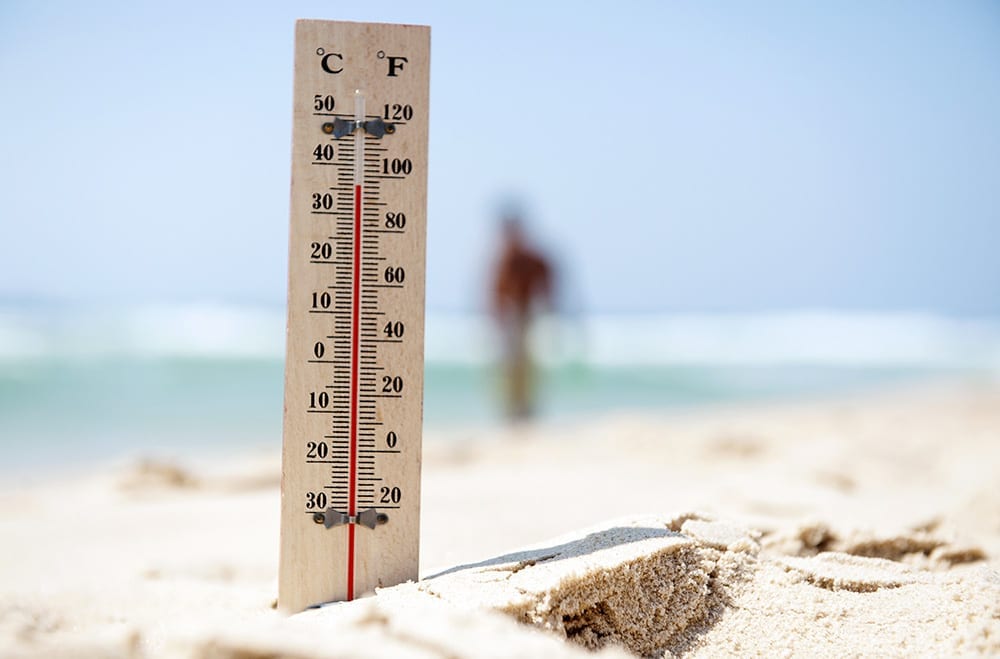
Bangkok, meanwhile, is stiflingly humid practically all the time (discomfort levels range from ‘high’ to ‘extreme’ year-round), but the best time to visit Thailand’s capital is December and January, when it is dry and a relatively bearable 31-32ºC average during the day, and 20ºC at night (the coldest it ever gets).
But, consider July and August, when there are great hotel deals on hand – and the rain only lasts for a short time in the afternoon.
Avoid the months of April and September. April is agonizingly hot and humid; September is hot, humid and torrentially wet.
What about Chiang Mai and the North?
Chiang Mai and the charming little town of Pai, in Thailand’s cooler north, have much more pleasant climates than Bangkok and the south.
Go from December to February for lovely sunny days (around 29ºC) and cooler evenings (the temperature dips to 13ºC – and even lower in the highlands, so dig out some cozy clothes if you’re outdoors).
The Best Time to Visit Thailand’s Beaches
Don’t be put off with the idea of booking your Thailand beach vacation during the height of the country’s winter.
Though the weather anywhere north of Bangkok may require a light pullover come evening, clear skies grace almost the entire country between December and the end of February.
Besides, “jacket-weather” in Thailand is still shorts and t-shirt weather for most of the rest of the world.
For island and beach goers, this is the best time to plan your trip, as the air will be less humid and the sun won’t be scorching (meaning you can actually lay out in the sun without getting drenched in sweat after just five minutes).
Add in the light evening breeze, and you won’t want anything else during your Thailand vacation.
What is the worst time to visit Thailand
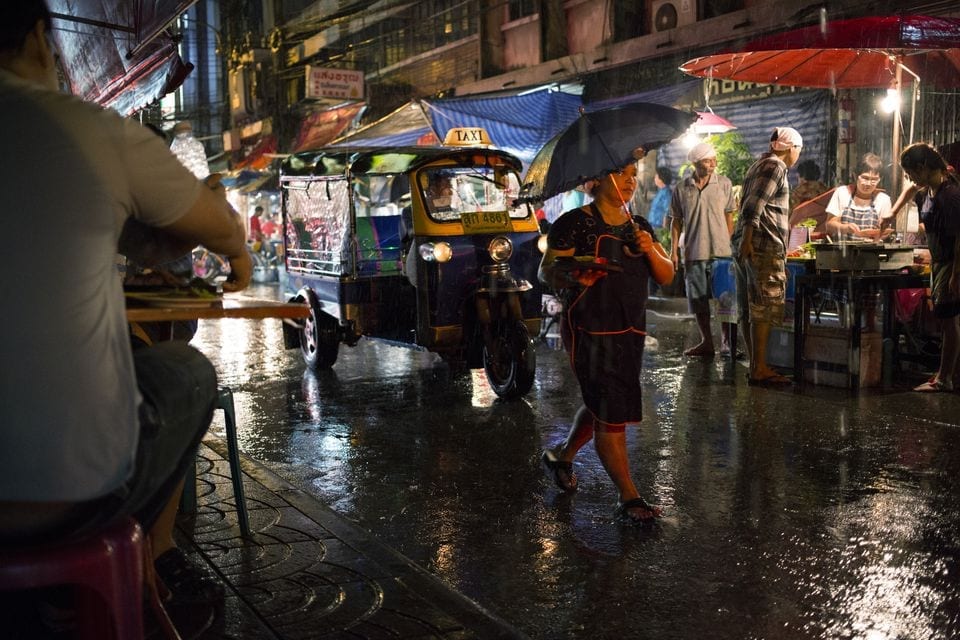
Honestly, there really isn’t a bad time to visit Thailand because, despite drenching downpours and overcrowded markets, there will always be coconuts, fresh noodles, and Thai massages no matter the weather.
However, if you are traveling to the country in hopes of returning home with any sort of sun tan, avoid planning your trip between July and the end of October.
That’s when monsoon season is in full blow, and the whole country is impacted, from Chiang Mai (where weather can be chilly and wet), to Bangkok, where the air is suffocating and streets become flooded with rain water.
The rainy season in Thailand typically takes place from July to October.
Sometimes the months of May and June will also see some extra rains as they lead into the official monsoon season.
Travelers should also be cautious of booking stays in April and early May.
This is what is considered the “hottest” season of Thai climate.
Temperatures can exceed 104 degrees, so if you can’t handle the heat, plan your trip for a few months earlier.
On the flip with ideal weather inevitably comes hordes of people.
Late November through December is popular with international travelers, given the holiday season and less stifling, more comfortable Southeast Asian air.
So, to avoid all the attractions packed with tourists, cities and beaches less crowded and still offer occasional sunny, bearably weather go to Thailand in the rainy season and enjoy all it has to offer without the crowds.
Weather during the rainy season
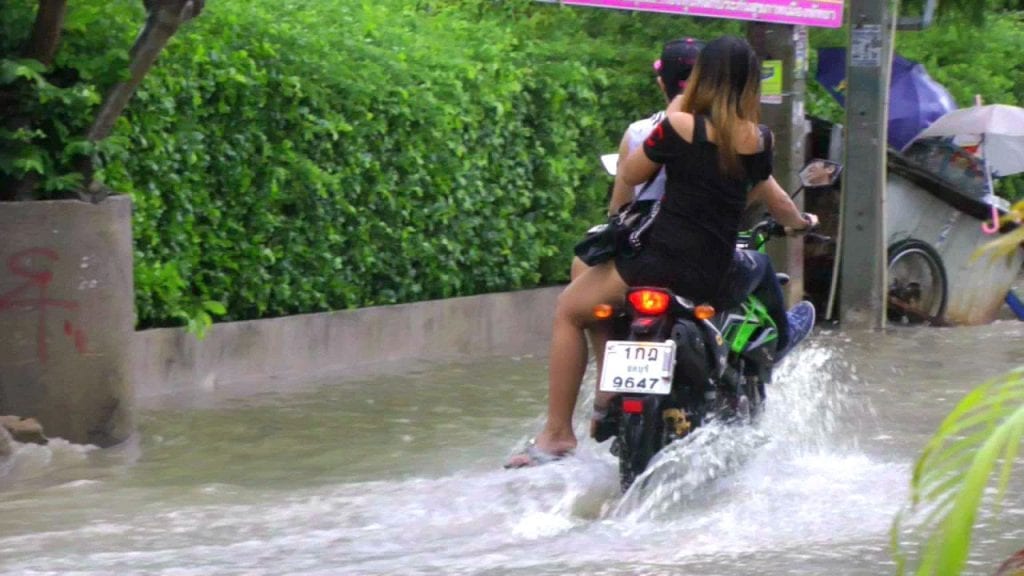
The high will be around 89º F (32º C) and the daily low around 78º F (25º C). April and May, granted, are the hottest months of the year in Thailand. The months that typically get the most rainfall are August and September.
Caution– During the rainy season in Thailand, the seas are typically very rough, and for beachgoers swimming and watersports can sometimes be dangerous due to generally large waves and frequent storms.
Which part of country you should visit in the rainy season
You can travel to Thailand during the rainy season and chances are you’ll have an abundant holiday, but be prepared for billows, rainstorms and, worst case scenario, possible serious disruptions such as flooding in your travel plans.
In most years, Thailand and Southeast Asia is rainy for nearly half the time between June and October.
However, Thailand can certainly still be enjoyed during the monsoon season but the weather may be less predictable for those wanting to take advantage of the many outdoor activities such as hiking or water sports.
The truth is, if you travel in Thailand during the rainy season, you are going to get wet but you can still have a great time by planning activities at the right times and accepting that your plans may be interrupted by the weather.
Is There Anywhere Specific You Should Visit During Rainy Season
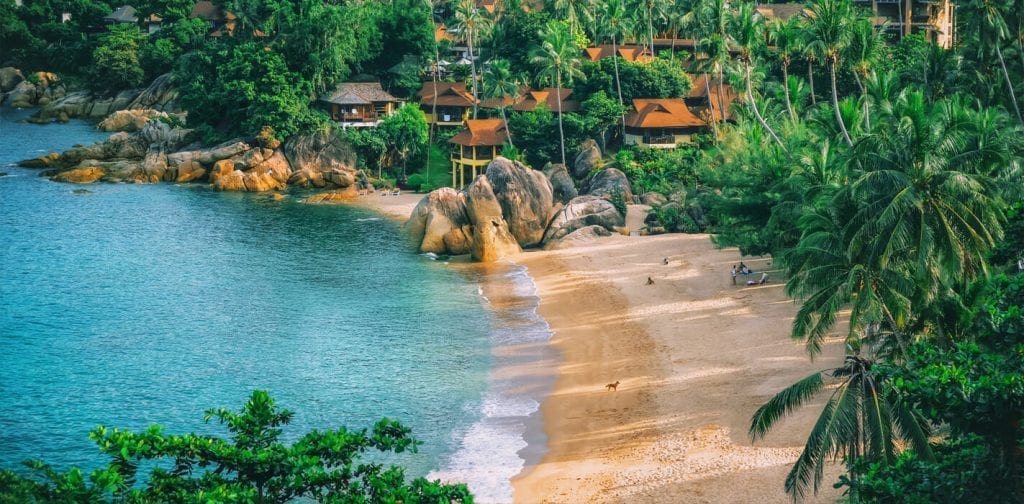
Definitely, yes.
Head for Samui, Koh Pha Ngan, or Koh Tao.
It won’t be totally dry but it gets significantly less rainfall during the rainy season than the rest of the country.
Although Thailand’s seasons tend to be regular across the country, the Samui Archipelago, in the western part of the Gulf of Thailand, has a slightly different rainy season and most precipitation occurs between October and January.
So, if you want to travel to Thailand between June and October, the region’s islands are a good alternative.
Samui isn’t totally dry during the rest of the country’s rainy season, though, so you may encounter overcast skies, rainfall and a fair bit of humidity.
Of course, the islands adjacent to Samui were the scene of some of the worst off-season rains and flooding the country has seen in a while, so there are no guarantees when it comes to the weather!
The rainy season in Thailand can certainly have an impact on tourists’ travel plans.
Remember, the most rainfall in Thailand is from August to October depending on which part of Thailand you are visiting so be prepared.
Conclusion
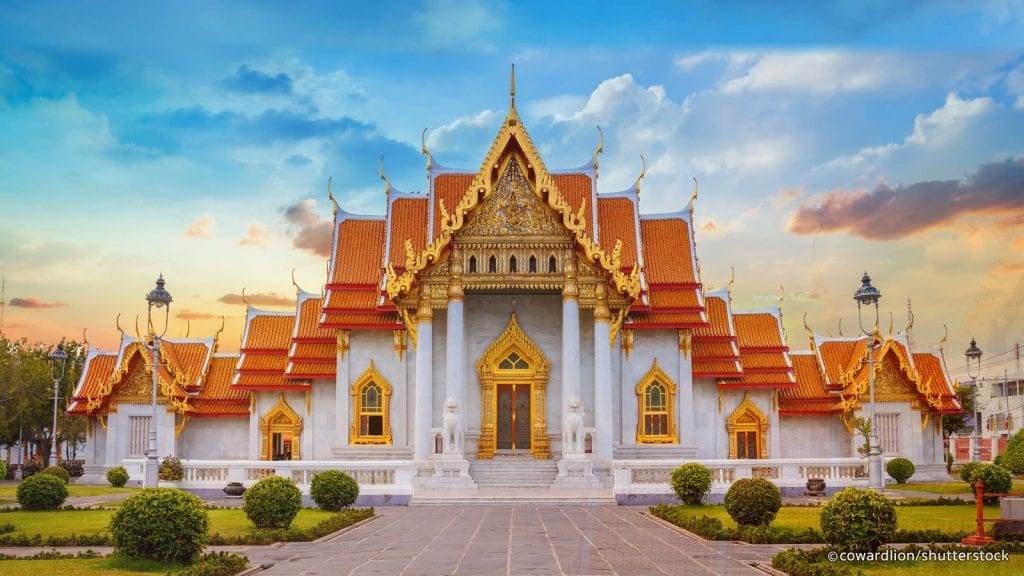
Known for its tropical beaches, extravagant royal palaces, ancient ruins and beautiful temples, Thailand, in Southeast Asia, is certainly no stranger to travelers both budget and luxury.
The peak tourist seasons are naturally the most expensive times to travel.
If you’re looking to keep costs down, visit in the shoulder seasons or even endure the rainy season.
The country is also renowned for its delicious food offerings, bustling markets, culture and nightlife.
There’s no wonder it’s very high on many travel lovers bucket list. Please let us know if you have a favorite destination or attraction that is a must-see in Thailand.


